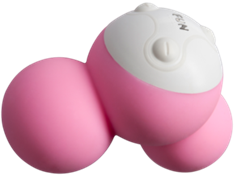If your relationship isn’t “Facebook official,” is it real in this day and age of social media? Read on to learn about my thoughts on several different types of relationship modes on Facebook:
1. The Play-by-Play: They’re on. They’re off. Oh, wait, they’re back on. Friend this person so you can find out when they’re “in a relationship” or she’s “single” again. Tune in for the occasional status update in which all the specifics about what’s not working are shared with every friend she has! Also note related status updates in which a guy checks in with the boys at a sporting event or locations in Vegas, Miami or New York, or a female writes about how much she loves her girlfriends and that she’s in desperate need of a spa day or Girls’ Night Out!
2. The Photo Barometer: Are they on or off? They don’t include their relationship status in their Facebook profiles, but a simple glance at which profile picture they’re using should tell you all you want to know. A couple’s shot means that they’re on, but a photograph without the other person speaks a thousand words.
3. Peeing on the Wall: You didn’t even know that those two people knew each other, and yet, he’s writing on her wall, checking in at places with her, and commenting on her photos as though he’s getting paid to do so! It’s like The Animal Kingdom, Facebook Edition. The man wants to mark his turf and let you know that he’s staking his claim to this woman and her…I’ll go with heart. Just click “like” to encourage this behavior.
For those of you who notice a lot of comments on your wall after only one date, view this as a bright yellow flag! If you're in a relationship and don’t write on your girlfriend’s wall, while she writes a lot on yours, realize that she still feels the need to proclaim that you’re her man.
4. The Masquerade: A couple hasn’t indicated that they’re in a relationship. The two people don’t write on each others' walls. They don’t post their own pictures of themselves, and yet, they’re tagged together in photos at every event. Are they together? Yes. Are they doing their best to keep their relationship off of social media? Yes. Tag sparingly if you’re a good friend of either party.
5. The Passive-Aggressive: He doesn’t confront his significant other about a problem directly, but he’ll start a conversation about the issue on Facebook. Parenting, money, shopping, PMS and pregnancy are often the prime topics to be highlighted. Maybe relationship therapy from the Facebook peanut gallery can help smooth things over? [Insert eye roll here.] Isn’t it easier to keep certain matters private and off relatively public forums like Facebook and blogs?
6. The Glory of Love: She can’t describe her partner in a status update without the use of a minimum of three adjectives. And, there are numerous status updates a season, espousing her undying love and appreciation for her wonderful, fabulous, amazingly sweet husband. I’m all for letting others know that you love and appreciate them. And, there's nothing wrong with the occasional loving status update or wall comment. But, unless you're in the beginning stages of a relationship, me thinks thou doth praise too much.
So, readers, what did I miss? What have you seen on Facebook with respect to relationships that's worth noting? What modes do you personally use?





